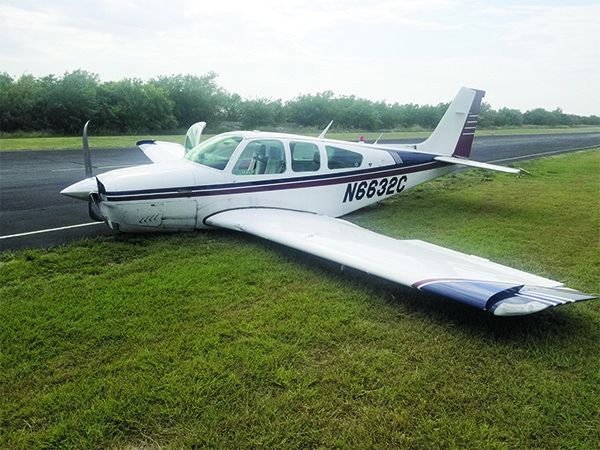
Editor’s note: The following is a first-person account of an inadvertent gear-up landing and its aftermath, written by the incident pilot and adapted from a series of posts at BeechTalk.com, an online resource for Beechcraft owners and pilots of all aircraft types.
On August 5, 2020, I landed my much-loved Beechcraft F33A Bonanza gear-up at my home airport. What follows details my interpretations of the causes and lessons learned from this incident, and its aftermath, in the hope my fellow pilots can learn from my mistakes. By way of background, I earned my private certificate in 1986, adding the instrument rating a couple of years later. I now hold a commercial certificate with single- and multi-engine land ratings, plus the instrument rating.
Like many, I’ve had years when I could not afford to fly, but for the last 13 years I owned a Van’s RV-8, in which I flew over 1000 hours from coast to coast, and to Alaska and back in the summer of 2019. In February 2020, I bought an F33A Bonanza upgraded with an IO-550 engine and a Hartzell Scimitar prop; the transaction included two days of transition training before flying it to my home airport in Texas. Over the next couple of months, I flew it a lot, including trips to Illinois, South Dakota, Washington state and Montana. I also started working on my instrument proficiency, accumulating more than five hours of instruction.
SETTING THE STAGE
In July 2020, I started a long trip, combining vacation and business. Destinations included airports in Missouri, Illinois, Iowa, Wyoming, South Dakota, Wisconsin, Minnesota, Arkansas and Oklahoma. At the end of each flight, I tried to work in a practice instrument approach. After more than two weeks on the road, I launched from Oklahoma for home base, an airport tucked under a tier of the Dallas-Fort Worth (DFW) Class B airspace and nestled between three Class D airports.
For those not familiar with the DFW area, there is a lot of flight training, and the airspace often is very busy. If I don’t get a Class B clearance when arriving, I try to stay at a moderate altitude above the training traffic and descend once clear of it. This time I was lower and closer (Mistake One) and was dodging training aircraft. After days of flying where I saw few other airplanes, all the targets on my traffic display were concerning, but I wanted to get home (Mistake Two). To slow down and maneuver better, instead of lowering the gear and maybe approach flaps, I extended full flaps (Mistake Three). Since the route and altitude were not my normal ones, I found myself looking at home plate’s favored runway at my 10 o’clock position. It was a beautiful, beckoning sight. Instead of flying a pattern, I chose to approach straight-in (Mistake Four).
With full flaps, the plane felt right for a VFR landing with approach flaps and gear down: performance = configuration + power. Perhaps due to fatigue or get-home-itis or all the practice IFR approaches I had shot recently, I didn’t realize there was no FAF to trigger lowering the landing gear (Mistake Five). It turns out performance with full flaps is just about the same as for gear-down and approach flaps.
ARRIVING
As I flared, expecting to feel the bump of tires on pavement, I heard something buzzing. It was the gear-warning horn, but I didn’t recognize it for what it was (Mistake Six). I thought it was the stall horn. My noise-canceling headset didn’t help (Mistake Seven?). Then I heard the tips of that beautiful 3-blade Hartzell Scimitar prop with its awesome chrome spinner striking the pavement.
For just a moment, I thought of adding power and then realized I did not know what damage the prop or engine had sustained. I decided to just ride it out and hopefully live to fly another day even if the plane did not. I stand by that decision. I might have gotten away with it and prevented the airframe damage, or I might have just put myself in the perfect position to become a fatality. I committed to the landing, pulled off what little power remained and concentrated on keeping the wings level and not stalling or dropping it in. Just fly it smoothly all the way down to the ground.
The landing and subsequent runway slide were remarkably smooth. And quiet. Except for my cussing. Dust was kicking up from the floorboards. When I saw that, it reminded me to turn off the fuel, ignition and master switch. When the plane came to a stop, I opened the door and got out.
Many people came over to check on me. I called a mechanic on the field who I trusted. He agreed to help get it back on the landing gear but suggested I needed to call the airport manager. The airport manager called the FAA FSDO and the FSDO called me. Once he determined there were no injuries, he got some basic information from me. He had us take a lot of pictures inside and out. Soon we had lifted the plane, put it on its gear and towed it to my hangar.
Thus ended my vacation/business trip. A new journey began.
FAA PART 1: INVESTIGATION
There were two stages to my interactions with the FAA. First came the investigation, followed by a “reexamination” with someone from the FSDO. Two different people did these and both interactions were professional and positive. The FAA investigator gave me a list of things to send him by email, which I did that night. Follow-up emails asked for more information, but it was all reasonable and expected things like a copy of my certificate, logbook copies, last flight review date, time in the airplane, etc.
The incident was on August 5, and September passed with no new information. Around October 1, I received notification that the FAA was requiring a “reexamination” before I could return to flying. One portion was ominous and troubling: “…the FAA has reason to believe that your competence as a certificated airman is in question….” The investigator handling my incident explained that the reexamination’s intent is not to give a check ride but to see if there is something more to the incident than just a lapse in judgment. That is exactly the second opinion I wanted to have. I was about to turn 66 years old and I know the time will come when I am no longer fit to fly. Will I recognize that time when it arrives? A second opinion is exactly what I needed.
FAA PART II: REEXAMINATION
The hardest thing about the reexamination was finding an appropriate airplane to take it in. They wanted it in an airplane similar to my F33A. It took time to find a retractable to rent, get checked out and make sure my insurance covered rental aircraft. I ended up using a Mooney M20F Executive. It helped a lot that I had flown Mooneys before, so I was familiar with them. Surprisingly, I was very comfortable with the flying and really did not worry about my abilities—after the first steep turn, I felt right at home again. I did, however, check the gear down lever (yes, lever, a.k.a. the Johnson Bar) and indicator light at least 51 times over the course of the training. Getting signed off by the CFI was the first “second opinion” I was to get.
Once I got the signoff from the CFI, I scheduled the reexamination. The FAA inspector and I spent an hour or so in a conference room where he checked my logbook, medical (Basic Med) and the logbook for the airplane. We then went over key aircraft systems, some aeromedical stuff, reviewed my incident and talked about what I learned, and what I would do differently. We went to the airplane, discussed a few more items, and then did takeoffs and landings, including a go-around, and simulated the landing gear being stuck in the up position.
Clearing the runway after a full-stop landing, the inspector said he was ready to sign me off and we could either fly more or go to the hangar. To the hangar we went! After securing the plane, we returned to the conference room to debrief and complete the paperwork. He had a few suggestions for my consideration, which was great. I wanted to learn all I could from this experience and become a better, safer pilot. I now had a third opinion on my fitness to continue as a pilot, and that opinion agreed with mine. Piloting skill was not the problem. Fatigue, get-home-itis and distractions were the problem.
The most nerve-wracking thing about the reexamination is I only had 1.6 hours in that Mooney, so it was somewhat new to me. The checkout, however, had gone well and before the FAA reexamination, I studied up on some areas I was not as fluent and would have liked to know better. One way to reduce stress is to be prepared. I don’t think I over-prepared, but I was ready for all the likely stuff and it paid off.
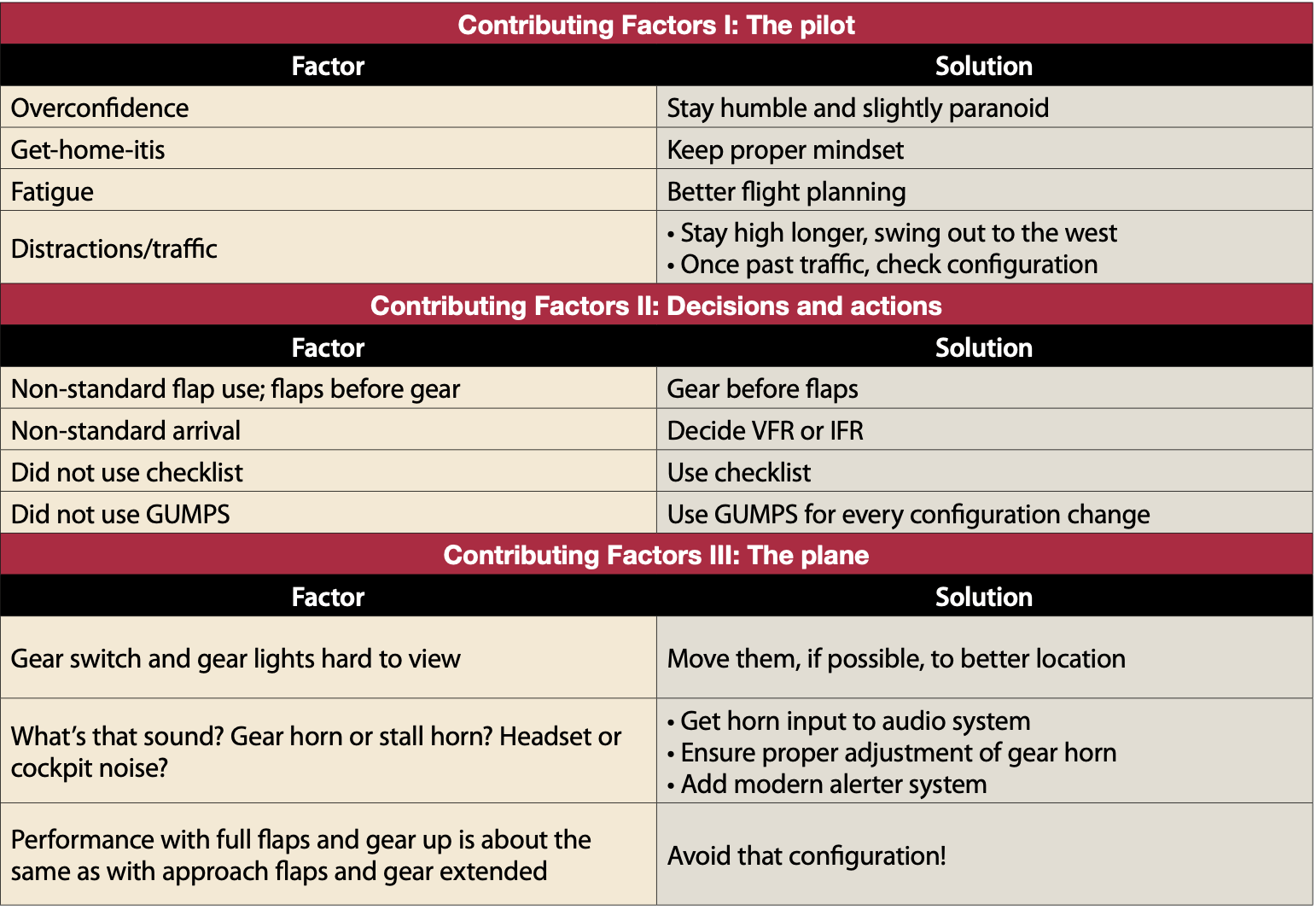
AFTERMATH
It was definitely a bad day for me and my airplane, but we are well along in our recovery. Repairs should be finished just after New Year’s Day. Since not only will the repairs be accomplished, I’m also taking the opportunity to address other maintenance items, like installing new fuel bladders and brake hoses. Since the engine needed to be torn down, I’m adding some money to the pot to do an overhaul. That should be the last overhaul for the rest of my flying time.
I had wanted to add tip tanks and since the wings were off, the plumbing work was easy. Since the new airframe parts need to be painted, the incremental cost for painting the new tips is low. The gear mechanism needed to be torn down and inspected, so while that is being done, the motor and dynamic brake are being rebuilt. We found a significant problem with the autopilot elevator servo, which is being corrected. When I get the airplane back, maintenance should be minimal and enjoyment maximum.
I also may make some modifications to the airplane that would help prevent this kind of thing in the future. One of them is an enhanced gear warning system. There are products available that provide alerts beyond the factory system when landing with retracted gear. Even after installation, their cost is much less than a gear-up landing. I plan to get some avionics upgrades soon and will probably have one installed.
I also may relocate the gear handle and/or lights. One factor contributing to my incident is it’s very hard to see my Bonanza’s gear handle and lights with dual controls and an iPad mini mounted to the yoke. Depending on who I ask, it’s either an easy and legal mod or an insurmountable task. I would love to have the gear switch and lights up on the panel in clear and frequent view. It would not solve the problem but would help.
I hope this tale is of value to you and that it helps someone avoid this same event. Other than mechanical failure of a component, there is no reason that these incidents should happen.
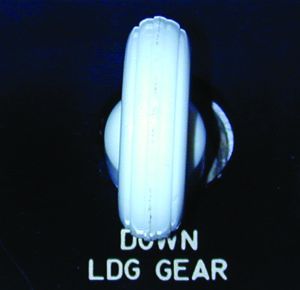
My biggest fear was what my high-flying-time sister and high-flying-time friends would think of me. It turned out to be a non-issue. Everyone I know, everyone who stopped at the hanger to see the damage, and everyone on the BeechTalk forum were very supportive and positive. People make mistakes and the main thing is I was alive and uninjured.
My second biggest fear was that the FAA was going to “pull my ticket.” I was torn a little bit between “don’t share anything” and “tell them every sin.” I learned a long time ago that in almost all cases, when you make a mistake, ’fess up and take your medicine. Before the first call from the FSDO, I decided I would be forthright and tell the FAA what happened, answer their questions honestly and take what comes. It wasn’t like there was any question what happened. There was no mechanical problem. Just operator error.
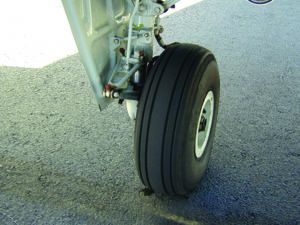
My third biggest fear was that I would have to scrap the airplane. It flew just about perfectly, and it was fast. And pretty! As I worked through my emotions over the first couple of weeks, I realized what I was really feeling was an obligation to make things right. Clean up my mess. Put things back the way they were. While that may show character, it is not always possible. It also isn’t always financially wise.
Another fear was that I no longer was good enough to fly something like a Bonanza. This was very important to work through because I felt that if I was not good enough and kept flying, something much worse would be more likely to happen, and not just to me, but to a passenger. I took the incident as a warning sign.
I concluded that I had done all the training and hard work to be a safe Bonanza pilot. I had very good flight instructors, who concluded I was fit and capable. My skills were good, but maybe my decision-making was not as good as my flying? Maybe my procedures were not as good as they needed to be?
A final fear was very minor. People asked if I was afraid to fly again, or if I would be hesitant to. I never really felt those fears as more than a passing thought. The incident was obviously preventable. What I needed to do was identify all the lessons and to make changes reducing the chances of this happening again.
All these fears were tied into self-identifying as a pilot, and my identity was being threatened. If I am no longer a pilot, what remains? My bottom line is that being a pilot is only one part of me. I fly because I love it, and I’ll always be a pilot even if I stop flying. This incident does not change that, and does not make me less a pilot unless I let it.
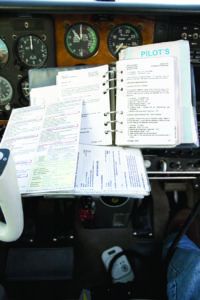
A thread on BeechTalk.com <tinyurl.com/yxmfrkpb> includes a lot of really good ideas on when/where to lower the gear, what airspeeds to use and mnemonics people have adopted. I encourage you to go to that thread and spend some time considering their ideas. Based on that input and other sources, I’ve added the following two changes to my procedures.
GUMPS Checks
Running the time-honored Gas–Undercarriage–Mixture–Prop–Switches checklist before each landing will take care of just about everything. Using GUMPS after every configuration change and after entering a new phase of flight is the single most important and powerful technique to prevent not only this but running a tank dry, not turning on a landing light, not turning on pitot heat, etc., etc. It is the magic bullet for preventing gear-up landings and other mistakes, both major and minor. Using GUMPS at all those points also programs our mind for the next actions. Powerful stuff. I use CIGARS (Controls–Instruments–Gas–Attitude (flaps and trim)–Runup) before every takeoff and now perform a GUMPS check at every phase-of-flight change.
Gear before Flaps
If the gear is lowered before any flaps, there will never be a chance that a configuration will give approximately the same performance and fool me into thinking the gear is down. I can land safely without flaps but not without gear. For some models of Bonanzas and probably other planes, that sequence may not be practical because of low gear speeds. But for my F33A, the gear-extension and approach flap speeds are both 154 KIAS, so either could be lowered to slow or maintain speed during a descent.




Mr. Dalman, thanks for this very incisive, very helpful article.
John